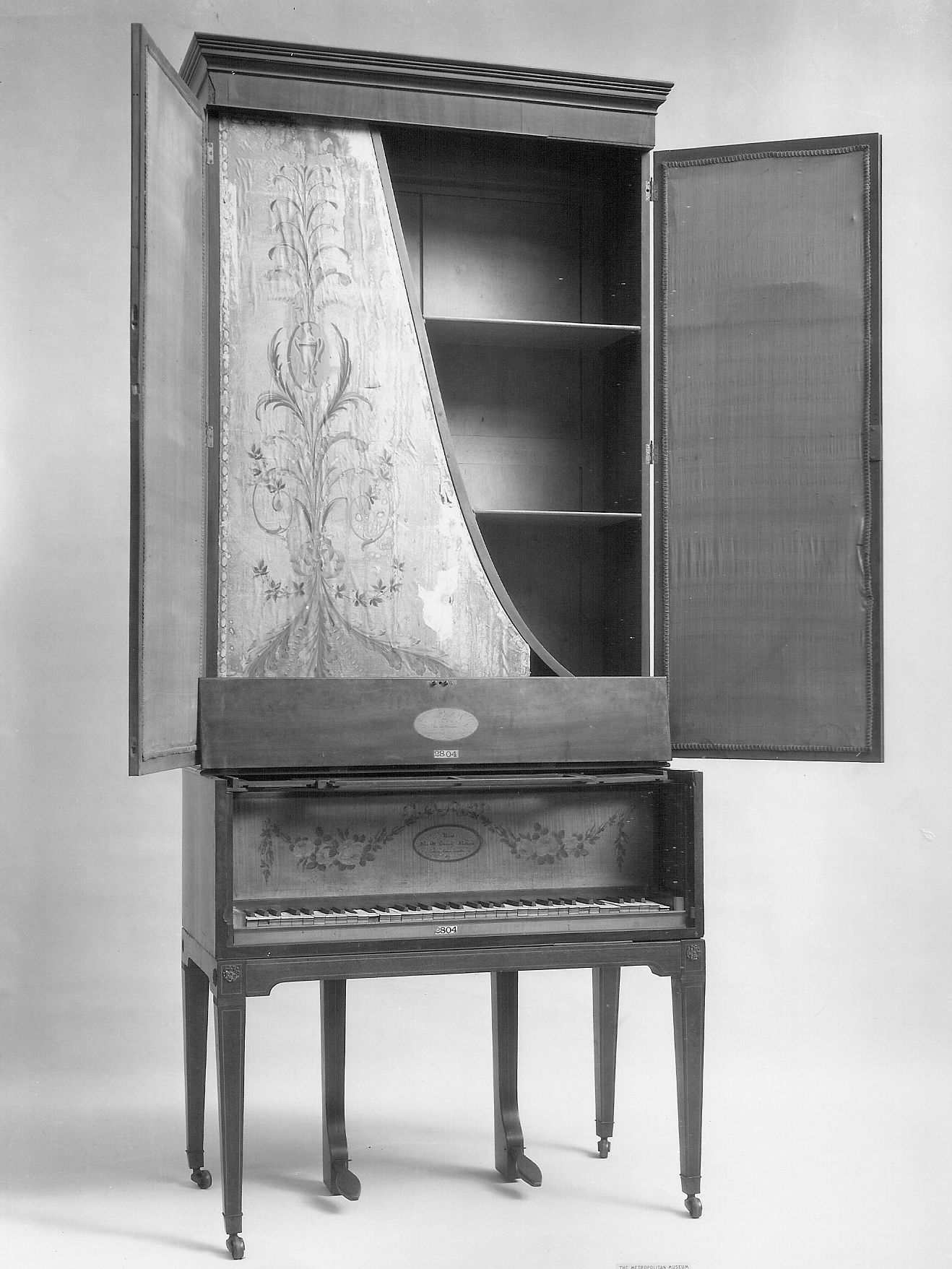Upright (Cabinet) Piano
M. & W. Stodart British
Not on view
The Stodard company was founded by Robert Stodart (fl. 1775-96) in London around 1775 and manufactured pianos until 1861. Stodart learned to build harpsichords and pianos from John Broadwood and was one of the British craftsmen who contributed to Americus Backers development of the English grand piano action. By 1794 Stodard's sons Matthew and William were both full partners and after Robert retired around 1796 continued as M. & W. Stodard, as can be seen on the label for this instrument. In 1795 the family started manufacturing upright pianos, patenting an upright cabinet piano design. The current instrument is an upright grand (with an action at the bottom end of the strings) that sits on a stand.
Technical description: Vertical rectangular mahogany-veneer case with two glass doors lined with velvet panels decorated with painted birds, flowers, and musical instruments; strings and soundboard occupy the left side of the cabinet, this space covered with a parchment panel decorated with a floral design, on the reverse parts of the eighteenth century English legal documents; two shelves occupy the cabinet's right side; keyboard surrounded by light wood panels bordered by mahogany, light and dark inlaid striping on nameboard, fallboard and keyboard lid, nameboard containing oval inlaid nameplate and a painted festoon of flowers on light wood ground; brass mounts on four square tapered legs with casters, two additional "legs" holding wood pedals beneath the case; action and keyboard slide out through hinged panel in back; compass FF-c4 (68 keys), ivory naturals with molded fronts, ebony accidentals, two pedals, left - una corda, right - damper; English upright action with escapement and back-check; hammers, located behind strings, striking towards the front; dampers also behind strings, pulled away by "L"-shaped arms coupled to key levers by stickers; triple strung throughout, no wound strings.
Due to rights restrictions, this image cannot be enlarged, viewed at full screen, or downloaded.
This artwork is meant to be viewed from right to left. Scroll left to view more.



